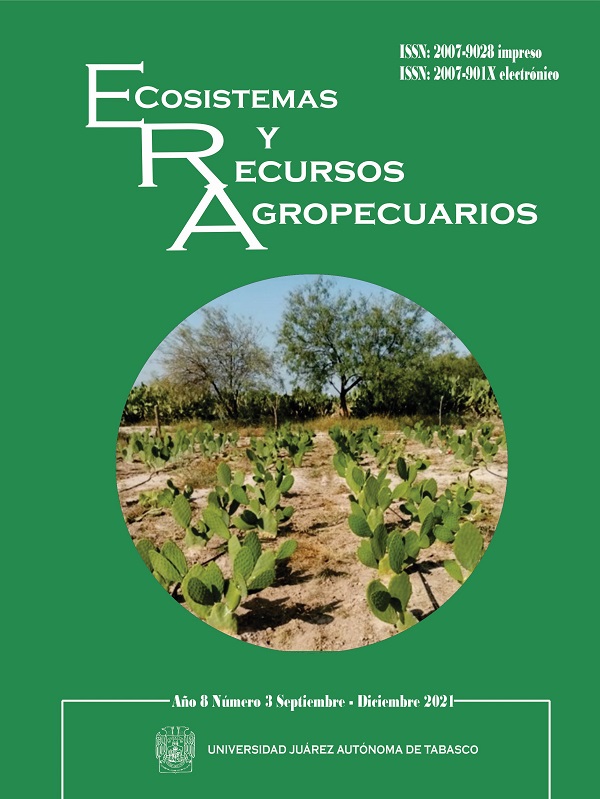Biochemical and molecular activity of oxidative stress enzymes in tomato plants growth with lead
DOI:
https://doi.org/10.19136/era.a8n3.3163Abstract
In agricultural soils lead can be found at very high concentrations due to anthropogenic activity. The objective of this research was to study the activity at the biochemical and molecular levels, oxidative stress enzymes in tomato plants cv. Mariela grown at different lead concentrations (0, 50 and 100 mg kg-1 PbAc2). For the biochemical activity, enzymes superoxide dismutase (SOD) and glutathione reductase (GR) were selected; also, the determination of protein concentration was done by spectrophotometry. The molecular activity was studied by real time PCR for three genes: SOD, Isoflavone reductase (IFR) and Transcriptionally Controlled Tumor Protein (TCTP). In the leaves, significant differences in protein concentrations were found compared to controls, with higher concentrations in the controls. The GR analysis showed that in leaves the higher concentrations were achieved with 50 mg kg-1 of PbAc2. In stems, no differences were found between the lead concentrations studied. In leaves and stems, the lower activity for SOD was at 50 and 100 mg kg-1 of PbAc2. The relative expression of the three genes in leaves was higher at 50 and 100 mg kg-1 of PbAc2; while in stems TCTP showed the higher expression at 100 mg kg-1 of PbAc2, SOD and IFR at 50 mg kg-1 of PbAc2. In this study SOD activity was damaged at both PbAc2 concentrations assayed, suggesting that the defense system of this cultivar against oxidative stress was compromised.
Downloads
Downloads
Published
Issue
Section
License
Copyright (c) 2021 Ecosistemas y Recursos Agropecuarios

This work is licensed under a Creative Commons Attribution-NonCommercial-ShareAlike 4.0 International License.
Aviso de copyright
Los autores que se envían a esta revista aceptan los siguientes términos:
una. Los autores conservan los derechos de autor y garantizan a la revista el derecho a ser la primera publicación del trabajo con una licencia de atribución de Creative Commons que permite a otros compartir el trabajo con un reconocimiento de la autoría del trabajo y la publicación inicial en esta revista.
B. Los autores pueden establecer acuerdos complementarios separados para la distribución no exclusiva de la versión del trabajo publicado en la revista (por ejemplo, en un repositorio institucional o publicarlo en un libro), con un reconocimiento de su publicación inicial en esta revista.
C. Se permite y se anima a los autores a difundir su trabajo electrónicamente (por ejemplo, en repositorios institucionales o en su propio sitio web) antes y durante el proceso de envío, ya que puede conducir a intercambios productivos, así como a una cita más temprana y más extensa del trabajo publicado. (Consulte El efecto del acceso abierto).

